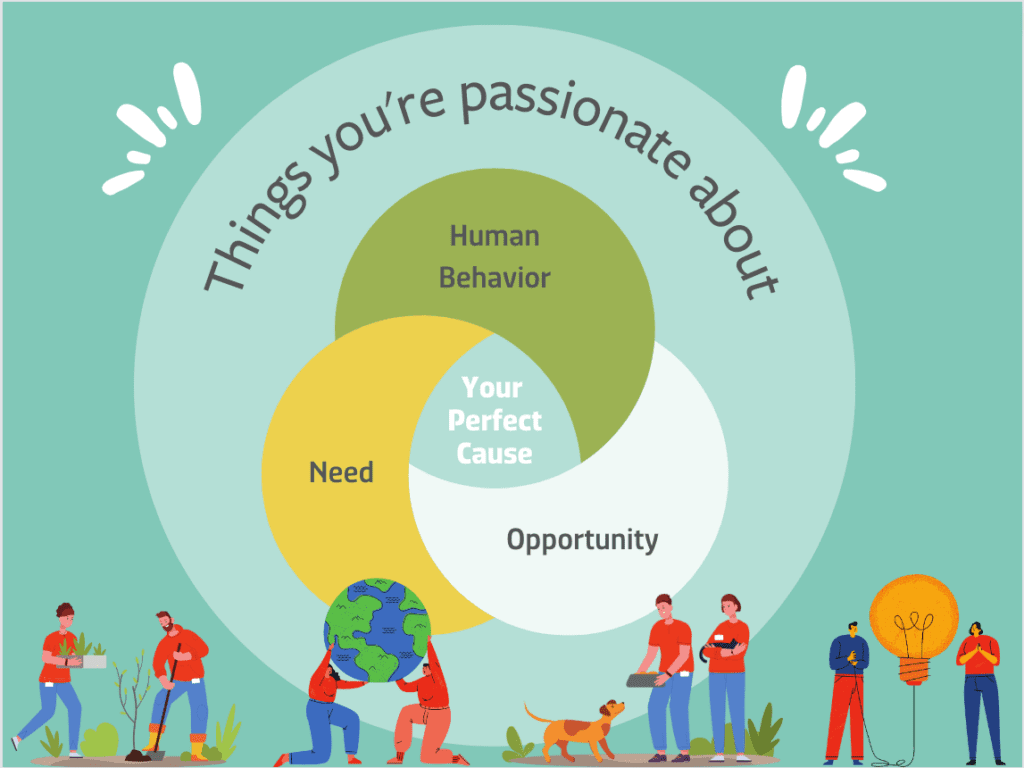
Consumers are looking to the C-Suite to give back. How will you commit to positive change?
Today’s executive leaders are uniquely positioned to use their power and influence to make a significant social impact, both individually and together with their organizations. There has always been a general recognition that as senior members of an organization and, therefore, a community, it is incumbent upon executives to use their status to effect positive change. This has, however, been more pressing in recent years. The year 2020 brought with it a global pandemic and the demand to right the various long-standing wrongs of social injustice. Most people, having spent months in lockdown to ponder the bigger picture, began to question their role of influence beyond the workplace and how they could go about accomplishing more. Specifically, corporations were called upon by their consumers, employees, and stakeholders to reflect more deeply on their impact. Suddenly, there was a world beyond business that everyone was made more aware of. Executives, in particular, began to ask, “What power do I have and how should I be using it?”
With social impact rising to the top of the list for both employees and executives, not to mention consumers, we’ve teamed up for this Insights article with our friend, Angela Gardner, Partner in Charge of the Los Angeles office of Heidrick and Struggles and Advisory Board Member to STEM Advantage, an L.A. based nonprofit advancing equity through education. As part of her work with clients, Angela has collaborated with such organizations as The Annenberg Foundation, The Jewish Community Foundation of Los Angeles, and the San Diego Zoo Wildlife Alliance. Together, we explore the business around social change and how, as an executive, you can cultivate space for it within your organization and personal life. In addition, we’ll discuss how to choose a cause that will make the most impact, including examples of how we’ve seen it done right.
The Business Case For Social Impact
Organizations have been called upon in recent years by consumers and employees to raise the bar of their mission. It’s no longer just about selling a product or service — consumers expect the companies they invest in to be values-driven and to see their values reflected in the brands they interact with.
64% of Americans think CEOs should take the lead on change. 1
Rather than waiting for Washington to impose it.
93% of employees believe companies must lead with purpose.
A further 88% believe it's no longer acceptable for companies to make money at the expense of society at large. 2
66% of consumers report they are willing to pay more for "products and services committed to positive change."3
Needless to say, if a company’s values don’t reflect those of its customer base, it will not only miss out on immediate profits but will be putting the future of the business at risk. Ask yourself what the future of your demographic is looking for. What do they want and need in terms of social change? And if you’re interested in business growth, think globally. The values of consumers in America are not always enmeshed with those in Europe or Asia, for example. Global values, such as climate change, however, impact everyone similarly.
Aside from the customer base, major changes to the environment have brought forth an additional business case for change. The deterioration of natural capital — the world’s natural assets that have been depleted by human consumption — have a particularly profound effect on global economic activity. To have a future in business at all, companies need to be taking the conservation of natural capital seriously and weave it into their value propositions. Research by McKinsey suggests that although human activity has pushed the planet twice beyond its limit of ‘safe operating space,’ “corporate action could help set natural capital on a path to recovery by 2050”. They estimate that doing things like switching to regenerative agriculture, reducing food waste, and implementing sustainable delivery models to reduce plastic pollution, could amount to an annual net benefit of $700 billion.
Creating an Environment for Positive Change
As an executive, it’s up to you to create the necessary environment to affect change. If your company doesn’t already have a clearly defined mission and values around social impact, you have the opportunity to change that. Even if the company at large is less supportive, start with your own team. For example, use environmentally friendly products and packaging or hire female- or diversity-owned businesses as vendors. Implement DEI practices and policies within your organization that can be adopted company-wide as the benefits become clear to others.
If your company is truly unaligned with your values and unwilling to be flexible with new initiatives, you may need to think about finding a company that is. And you wouldn’t be alone. According to research by Deloitte, nearly 70% of the C-Suite are considering quitting their job for one that better supports their wellbeing and values. The ability to integrate social causes into your work is obviously a big plus, but it isn’t the only way. If you want to stay with your company and they don’t support your efforts, you can back a cause by giving money or lending your personal time to serve on boards and committees.
Ecosystem of Impact
Whether your cause of choice is integrated into the organization you work for, you’re doing it on your own time, or both, you have an opportunity to create an ecosystem of impact. This means going beyond your immediate environment to create curiosity within your team and/or yourself. Be open to learning from upcoming generations and, in return, help them cultivate their own creativity and curiosity to solve problems.
Change is a waterfall of connections. One thing will affect another, then another, and so on. Pieces come together to create something new. Focus on expanding your horizons and pay attention to the need within your immediate reach. Use your executive intellect to prioritize and develop solutions.
Deciding What to Focus On
Ultimately, your interests and values will lead you to the causes that you want to be involved in. Allow your personal skills and the skillset of your organization to guide you. Let’s take Angela’s firm, Heidrick and Struggles, as an example. They serve as advisors to the leadership of some of the world’s top organizations and have an ESG Practice, which holds the company to high standards internally as well as advising external clients of best practice initiatives. It was a natural jump to get her organization involved in STEM Advantage, where executives can coach and mentor first-generation college students on life after university. In one day, they were able to provide one-on-one counseling to over 100 students, potentially making a life-changing impact with just a few words of wisdom, support, and encouragement.
You may not even recognize the skills you have that can make an outside impact until you examine what you do on a daily basis that is unique. As another example, the Transcend team comes together from across the country to collectively strategize for one week each quarter. Taking a day in their most recent quarterly to volunteer together with Habitat for Humanity gave them an opportunity to use their team-building skills to serve their enterprise value of community in a literal way.
When deciding how to prioritize your efforts, start with things you’re passionate about. Then connect the dots between human behavior, opportunity, and need. Use these three points as a Venn diagram that will lead you to the most useful way to spend your time and energy to serve.

Whatever the cause, make it something you can really get behind and do it because you want to. If you’re making a contribution outside of work, it doesn’t have to take up a lot of time or extra resources — which are in short supply for most executives. However, keep in mind that when you’re spending time on something intrinsically satisfying that serves your local or global community, it won’t feel like extra work. If you can prioritize time for extracurricular boards or volunteering, you’ll be rewarded with the realization that sharing your knowledge and power is extremely fulfilling. Love animals? Join a board for your local zoo or humane society. Avid surfer? Put your energy into conserving the ocean. Or maybe your organization already supports a cause that you’d like to be more involved in. We challenge you to find three causes that fit into your Venn diagram and research the organizations that serve them to find your perfect match.
As an executive, you must ask yourself, “What is the ‘thing’ I want to leave behind for the next generation?”. By staying curious and choosing to go beyond yourself, your organization, and the company you work for to seek out need and construct solutions for the greater good, you are creating a living legacy that will make an impact well beyond your career and lifespan. If you have the opportunity to weave the causes you’re passionate about into your work, you’ll see heightened employee retention and engagement, increased growth and profitability, rising customer loyalty, and potentially universal change. Outside of work, you can use your power and influence as an executive to benefit your local and global community. Essentially, it’s up to you to use your skillset as a leader to create positive change. The good news is, it might be easier than you thought.
- Source: 2018 Edelman Trust Barometer cited by Chief Executive, “Why Social Impact is a C-Suite Issue”
- Source: Harvard Business Review “15 Eye-Opening Corporate Social Responsibility Statistics”
- Source: Nielsen Survey cited by Walden University, “How Big Business is Driving Social Change”



